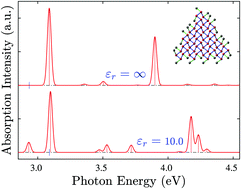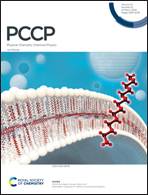Abnormal scaling of excitons in phosphorene quantum dots
Abstract
Excitonic states of a many-electron system in phosphorene quantum dots (PQDs) are investigated theoretically by using a configuration interaction approach. For a triangular PQD in various dielectric environments, its exciton is found to obey two distinct scaling rules. When there is a strong screening effect present in the nanodot, the exciton binding energy (Δex) is shown to be around −150 meV as the long-range Coulomb interactions are totally suppressed and it increases to about 100 meV when the effective dielectric constant (εr) decreases to 12.5. Over this range of εr, Δex is found to be well fitted into a quadratic form of εr−1, which scales neither linearly with εr−2 like the case of bulk three-dimensional semiconductors nor linearly with εr−1 like the case previously reported for graphene nanostructures. When εr is reduced below 10.0, however, Δex is shown to exhibit a perfect linear relationship with εr−1, which behaves just like that of a two-dimensional graphene sheet. On the other hand, with the reduced εr, the quasiparticle gap is found to decrease instead of increasing like in most of the semiconductor nanostructures. As a result, it is revealed that the relationship of Δex with the quasi-particle gap deviates largely from the linear one previously reported for graphene and many other two-dimensional materials.



 Please wait while we load your content...
Please wait while we load your content...